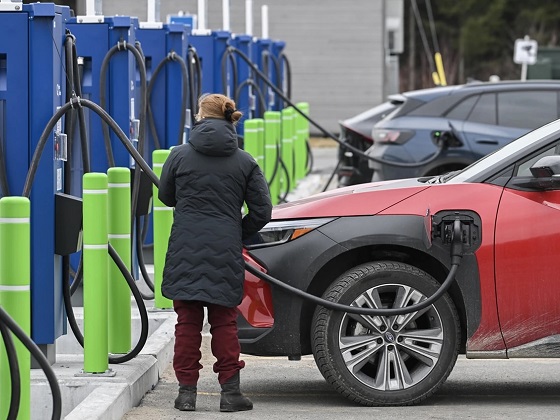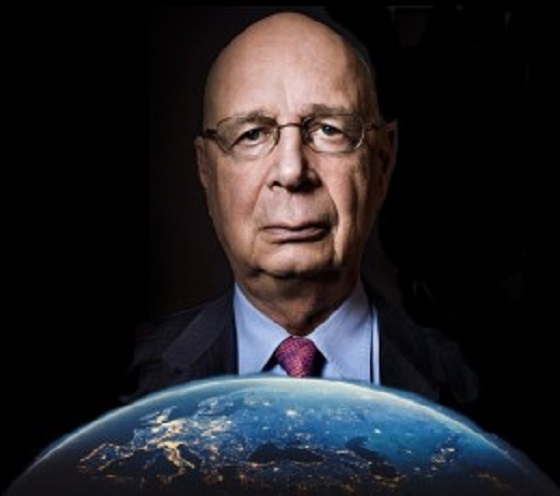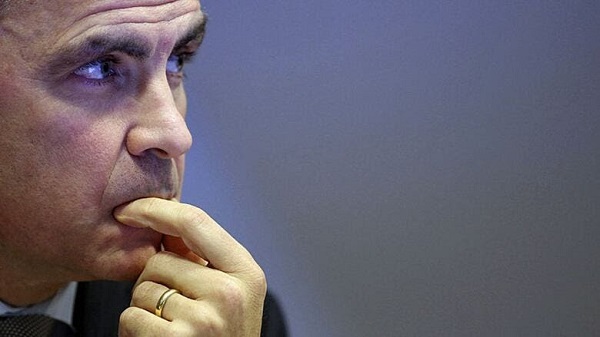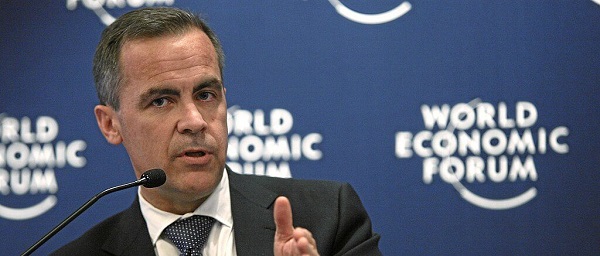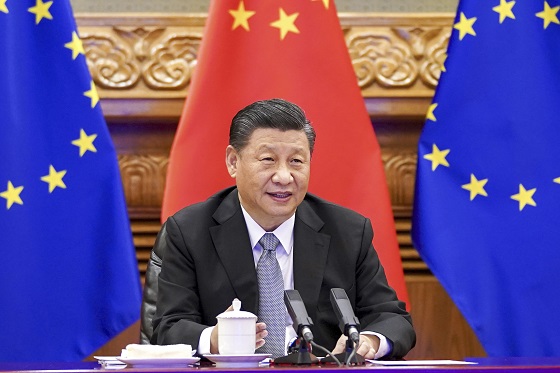Business
‘The DNA Of Our Foreign Policy’: How USAID Hid Behind Humanitarianism To Export Radical Left-Wing Priorities Abroad
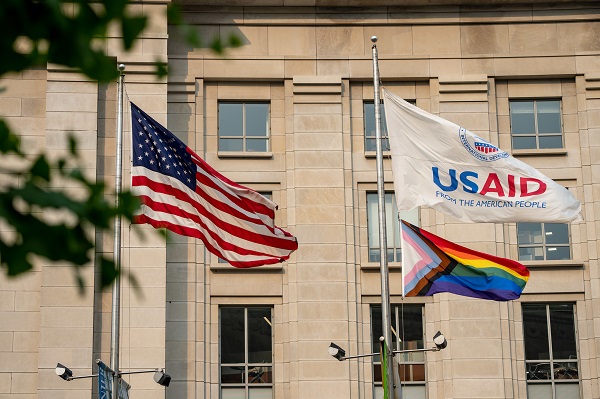

From the Daily Caller News Foundation
By Thomas English
Behind the veil of humanitarian aid, the U.S. Agency for International Development (USAID) doled out billions in taxpayer dollars to engage in left-wing social engineering abroad — from rampant LGBT advocacy to diversity, equity and inclusion (DEI) programs and tech censorship.
President John F. Kennedy established USAID in 1961 to, in his words, “provide generously of our skills, and our capital and our food to assist the peoples of the less-developed nations to reach their goals in freedom.” The agency, though, has reinterpreted Kennedy’s mission statement to mean that Ecuador suffers from a lack of drag shows, that Peruvian comic books are too light on transgender representation, that the Serbian workplace is insufficiently welcoming to the homosexual community — while also offering social media platforms a host of creative tactics to suppress those who disagree with USAID’s social agenda.
“It’s probably one out of every three grants is totally insane left-wing nonsense … USAID has always been somewhat left, but when the Biden administration started, you can clearly see a huge uptick in spending,” Parker Thayer, who researches federal spending at Capital Research Center, told the Daily Caller News Foundation. “The amount of lunatic, fringe grants goes up dramatically. For example, if you go to USAspending[.gov] and search for the keyword ‘transgender,’ the graph is basically a vertical line when you hit 2021. It’s kind of remarkable.”
He also emphasized his discovery of a $13 million grant for an Arabic-language translation of “Sesame Street,” calling it “something else, man.”
Other programs include a $2 million grant for funding sex-change procedures in Guatemala, $500,000 for LGBT inclusion in Serbian workplaces, $70,000 for a DEI-themed musical in Ireland, a transgender clinic in Vietnam, a similar clinic in India, $46,000 in HIV care for transgender South Africans, $1.5 million more for South African children to “learn through play,” $20,000 Bulgarians to enjoy a vaguely-defined “LGBT-related event” — programs for which former USAID Administrator Samantha Power said “a big pot of money” wasn’t enough.
These and other programs were the vehicle through which Power went about “working LGBT rights into the DNA of our foreign policy,” a priority she emphasized to Harvard students in 2015 during her tenure as U.S. Ambassador to the United States.
“One of the most common complaints you will get if you go to embassies around the world — from State Department officials and ambassadors and the like — is that USAID is not only not cooperative; they undermine the work that we’re doing in that country,” Secretary of State Marco Rubio, who assumed control over USAID on Monday, said. He condemned the agency’s more questionable programs as not only a waste of taxpayer dollars, but a diplomatic liability.
“They are supporting programs that upset the host government for whom we’re trying to work with on a broader scale,” he said.
Beyond pro-LGBT funding, former President Joe Biden’s USAID offered social media platforms a “disinformation primer,” a 100-page document providing guidance for countering “disinformation” through increased fact-checking and censorship — policies it said would make platforms more “democratically accountable.”
The document credits some of its content suppression tactics to the Global Engagement Center (GEC), a now-defunct agency that operated under the State Department. To “counter disinformation,” GEC recommended ginning up “moral outrage” against content that “violates [the] sacred value” of what it considers “the truth.”
Biden seemed to heed GEC’s guidance on moral outrage during the height of the pandemic in 2021, accusing Facebook of “killing people” by insufficiently censoring anti-vaccine content on the platform. Facebook founder Mark Zuckerberg recalled during his Jan. 10 appearance on “The Joe Rogan Experience” an instance when the Biden administration pressured him to censor a satirical meme about vaccine side effects. Biden later walked back his accusation against Facebook in an interview with CNN.
The USAID-funded primer also recommended “advertiser outreach,” a strategy that would financially throttle agency-disfavored informational outlets by informing advertisers of potential damage to brand reputation.
“[Advertisers] inadvertently are funding and amplifying platforms that disinform. Thus, cutting this financial support found in the ad-tech space would obstruct disinformation actors from spreading messaging online,” the Disinformation Primer reads. “Efforts have been made to inform advertisers of their risks, such as the threat to brand safety by being placed next to objectionable content.”
The document further characterized the legacy media’s recent decline “leading to a loss of information integrity,” which thereby justifies USAID’s efforts to combat those “casting doubt on media.”
“It leads to a loss of information integrity. Online news platforms have disrupted the traditional media landscape. Government officials and journalists are not the sole information gatekeepers anymore … Because traditional information systems are failing, some opinion leaders are casting doubt on media, which, in turn, impacts USAID programming and funding choices,” the document continued.
USAID also faced intense congressional scrutiny in 2023 after allegations emerged that its PREDICT program and subsequent grants to EcoHealth Alliance potentially funneled U.S. taxpayer funds into gain-of-function coronavirus research at the Wuhan Institute of Virology — which raised questions about USAID’s possible role in contributing to the origins of the COVID-19 pandemic.
Republican Kentucky Sen. Rand Paul complained that USAID refused to hand over documents pertaining to the allegations and the agency’s funding habits.
“The response I got from your agency was: ‘USAID will not be providing any documents at this time.’ They’re just unwilling to give documents on scientific grant proposals — we’re paying for it, they’re asking for $745 million more in money. We get no response,” Rand said. “We’re not asking for classified information. We’re not asking for anything unusual. 20 million people died around the world … and you won’t give us the basic information about what grants you’re funding — should we be funding the Academy of Military Medical Research in China?”
Secretary of State Marco Rubio echoed Rand’s transparency concerns after announcing he was the USAID’s new acting director Monday, calling the agency “completely uncooperative.”
“They’re one of the most suspicious federal agencies that exists,” Thayer told the DCNF, suggesting the agency’s reputation for being opaque is justified. “It’s kind of a character trait for USAID to be less than transparent.”
Thayer explained that, in his research, USAID is selective in its transparency. The grants he called “complete nonsense,” such as the “Sesame Street” translation, “are very specific about what they’re doing. And the ones that are vaguely humanitarian-sounding are usually written like someone put a sociology textbook through a word randomizer then just took whatever it spat out and put it on the page. They are so full of jargon words that they’re basically incomprehensible, even to people who understand what the jargon words are supposed to mean.”
“I got $1.1 million for a study of youth rural migration in Morocco,” he added. “I literally — I cannot help you in understanding what that could possibly mean. I have no idea what that means.”
Elon Musk, the leader of the Department of Government Efficiency (DOGE), claimed that he and President Donald Trump agreed to shutter the agency entirely during an X Spaces conversation early Monday morning. Rubio emphasized in a Tuesday interview with Fox News that he does not intend to “get rid of foreign aid,” but is considering whether USAID ought to be housed under State Department or remain an autonomous agency.
“This is not about getting rid of foreign aid,” Rubio said. “There are things we do through USAID that we should continue to do, that make sense. And we’ll have to decide: Is that better through the State Department, or is that better through a reformed USAID? That’s the process we’re working through … but they’re completely uncooperative. We had no choice but to take dramatic steps to bring this thing under control.”
Agriculture
Canada’s supply management system is failing consumers

This article supplied by Troy Media.
The supply management system is cracking. With imports climbing, strict quotas in place and Bill C202 on the table, we’re struggling to feed ourselves
Canada’s supply management system, once seen as a pillar of food security and agricultural self-sufficiency, is failing at its most basic function:
ensuring a reliable domestic supply.
According to the Canadian Association of Regulated Importers, Canada imported more than 66.9 million kilograms of chicken as of June 14, a 54.6 per cent increase from the same period last year. That’s enough to feed 3.4 million Canadians for a full year based on average poultry consumption—roughly 446 million meals. Under a tightly managed quota system, those meals were supposed to be produced domestically. Instead imports now account for more than 12 per cent of this year’s domestic chicken production, revealing a growing dependence on foreign supply.
Supply management is Canada’s system for regulating dairy, poultry and egg production. It uses quotas and fixed prices to match domestic supply with demand while limiting imports, intended to protect farmers from global price swings and ensure stable supply.
To be fair, the avian influenza outbreak has disrupted poultry production and partially explains the shortfall. But even with that disruption, the numbers are staggering. Imports under trade quotas set by the World Trade Organization, the Canada-United States Mexico Agreement and the Comprehensive and Progressive Agreement for Trans-Pacific Partnership are running at or near their allowable monthly share—known as pro-rata
levels—signalling not just opportunity, but urgency. Supplementary import permits, meant to be used only in emergencies, have already surpassed 48 million kilograms, exceeding total annual import volumes in some previous years. This isn’t a seasonal hiccup. It’s a systemic failure.
The system, designed to buffer domestic markets from global volatility, is cracking under internal strain. When emergency imports become routine, we have to ask: what exactly is being managed?
Canada’s most recent regulated chicken production cycle, which ended May 31, saw one of the worst shortfalls in over 50 years. Strict quota limits stopped farmers from producing more to meet demand, leaving consumers with higher grocery bills and more imported food, shaking public confidence in the system.
Some defenders insist this is an isolated event. It’s not. For the second straight week, Canada has hit pro-rata import levels across all chicken categories. Bone-in and processed poultry, once minor players in emergency import programs, are now essential just to keep shelves stocked.
And the dysfunction doesn’t stop at chicken. Egg imports under the shortage allocation program have already topped 14 million dozen, a 104 per cent jump from last year. Not long ago, Canadians were mocking high U.S. egg prices. Now theirs have fallen. Ours haven’t.
All this in a country with $30 billion in quota value, supposedly designed to protect domestic production and reduce reliance on imports. Instead, we’re importing more and paying more.
Rather than addressing these failures, Ottawa is looking to entrench them. Bill C202, now before the Senate, seeks to shield supply management from future trade talks, making reform even harder. So we must ask: is this really what we’re protecting?
Meanwhile, our trading partners are taking full advantage. Chile, for instance, has increased chicken exports to Canada by more than 63 per cent, now accounting for nearly 96 per cent of CPTPP-origin imports. While Canada doubles down on protectionism, others are gaining long-term footholds in our market.
It’s time to face the facts. Supply management no longer guarantees supply. When a system meant to ensure resilience becomes a source of fragility, it’s no longer an asset—it’s an economic liability.
Dr. Sylvain Charlebois is a Canadian professor and researcher in food distribution and policy. He is senior director of the Agri-Food Analytics Lab at Dalhousie University and co-host of The Food Professor Podcast. He is frequently cited in the media for his insights on food prices, agricultural trends, and the global food supply chain.
Troy Media empowers Canadian community news outlets by providing independent, insightful analysis and commentary. Our mission is to support local media in helping Canadians stay informed and engaged by delivering reliable content that strengthens community connections and deepens understanding across the country.
Business
Prairie provinces and Newfoundland and Labrador see largest increases in size of government

From the Fraser Institute
By Jake Fuss and Grady Munro
A recent study found that Canada has experienced one of the largest increases in the size of government of any advanced country over the last decade. But within Canada, which provinces have led the way?
The size of government refers to the extent to which resources within the economy are controlled and directed by the government, and has important implications for economic growth, living standards, and economic freedom—the degree to which people are allowed to make their own economic choices.
Too much of anything can be harmful, and this is certainly true regarding the size of government. When government grows too large it begins to take on roles and resources that are better left to the private sector. For example, rather than focusing on core functions like maintaining the rule of law or national defence, a government that has grown too large might begin subsidizing certain businesses and industries over others (i.e. corporate welfare) in order to pick winners and losers in the market. As a result, economic growth slows and living standards are lower than they otherwise would be.
One way to measure the size of government is by calculating total general government spending as a share of the economy (GDP). General government spending refers to spending by governments at all levels (federal, provincial, and municipal), and by measuring this as a share of gross domestic product (GDP) we can compare across jurisdictions of different sizes.
A recent study compared the size of government in Canada as a whole with that of 39 other advanced economies worldwide, and found that Canada experienced the second-largest increase in the size of government (as a share of the economy) from 2014 to 2024. In other words, since 2014, governments in Canada have expanded their role within the economy faster than governments in virtually every other advanced country worldwide—including all other countries within the Group of Seven (France, Germany, Italy, Japan, the United Kingdom, and the United States). Moreover, the study showed that Canada as a whole has exceeded the optimal size of government (estimated to fall between 24 and 32 per cent of GDP) at which a country can maximize their economic growth. Beyond that point, growth slows and is lower than it otherwise would be.
However, Canada is a decentralized country and provinces vary as to the extent to which governments direct overall economic activity. Using data from Statistics Canada, the following charts illustrate which provinces in Canada have the largest size of government and which have seen the largest increases since 2014.

The chart above shows total general government spending as a share of GDP for all ten provinces in 2023 (the latest year of available provincial data). The size of government in the provinces varies considerably, ranging from a high of 61.4 per cent in Nova Scotia to a low of 30.0 per cent in Alberta. There are geographical differences, as three Atlantic provinces (Nova Scotia, Prince Edward Island, and New Brunswick) have the largest governments while the three western-most provinces (Alberta, Saskatchewan, and British Columbia) have the smallest governments. However, as of 2023, all provinces except Alberta exceeded the optimal size of government—which again, is between 24 and 32 per cent of the economy.

To show which provinces have experienced the greatest increase in the size of government in recent years, the second chart shows the percentage point increase in total general government spending as a share of GDP from 2014 to 2023. It should be noted that this is measuring the expansion of the federal government’s role in the economy—which has been substantial nationwide—as well as growth in the respective provincial and municipal governments.
The increases in the size of government since 2014 are largest in four provinces: Newfoundland and Labrador (10.82 percentage points), Alberta (7.94 percentage points), Saskatchewan (7.31 percentage points), and Manitoba (7.17 percentage points). These are all dramatic increases—for perspective, in the study referenced above, Estonia’s 6.66 percentage point increase in its size of government was the largest out of 40 advanced countries.
The remaining six provinces experienced far lower increases in the size of government, ranging from a 2.74 percentage point increase in B.C. to a 0.44 percentage point increase in Quebec. However, since 2014, every province in Canada has seen government expand its role within the economy.
Over the last decade, Canada has experienced a substantial increase in the size of total government. Within the country, Newfoundland and Labrador and the three Prairie provinces have led the way in growing their respective governments.
-
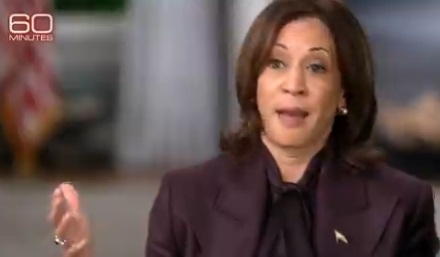
 International2 days ago
International2 days agoCBS settles with Trump over doctored 60 Minutes Harris interview
-

 Crime1 day ago
Crime1 day agoBryan Kohberger avoids death penalty in brutal killing of four Idaho students
-

 Business2 days ago
Business2 days agoWhy it’s time to repeal the oil tanker ban on B.C.’s north coast
-

 Alberta1 day ago
Alberta1 day agoPierre Poilievre – Per Capita, Hardisty, Alberta Is the Most Important Little Town In Canada
-

 MxM News1 day ago
MxM News1 day agoUPenn strips Lia Thomas of women’s swimming titles after Title IX investigation
-

 Business2 days ago
Business2 days agoLatest shakedown attempt by Canada Post underscores need for privatization
-

 Energy2 days ago
Energy2 days agoIf Canada Wants to be the World’s Energy Partner, We Need to Act Like It
-
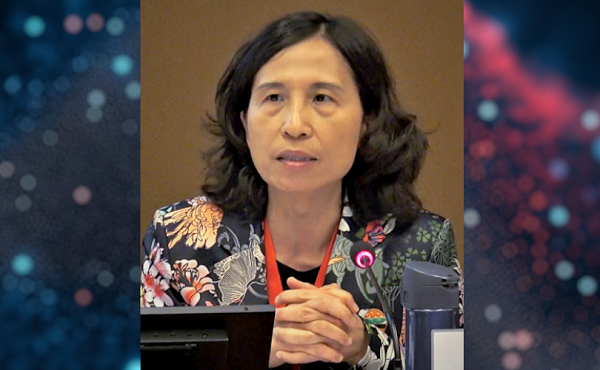
 COVID-191 day ago
COVID-191 day agoTop COVID doctor given one of Canada’s highest honors

